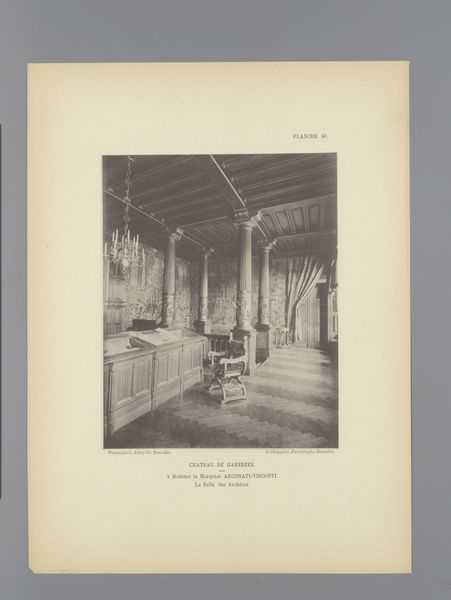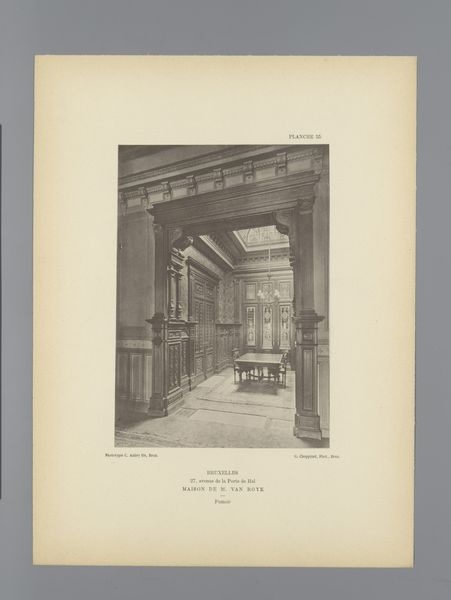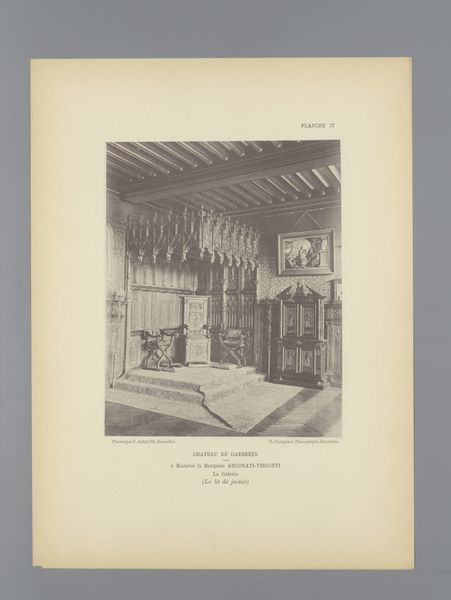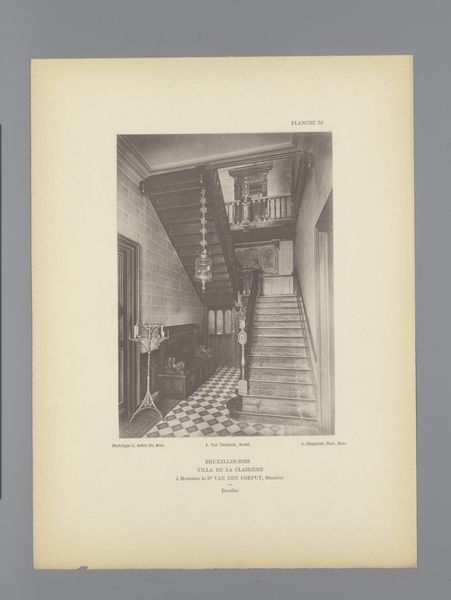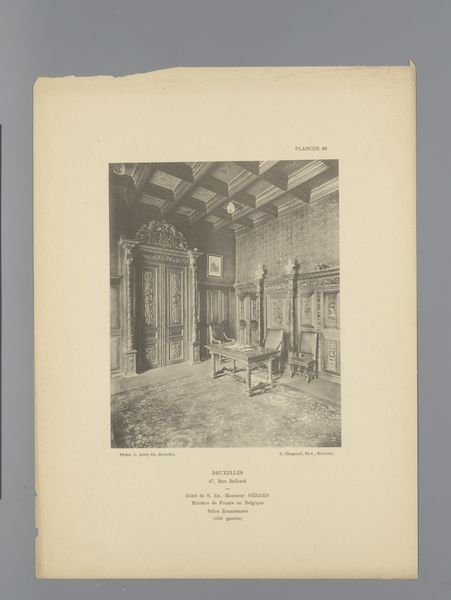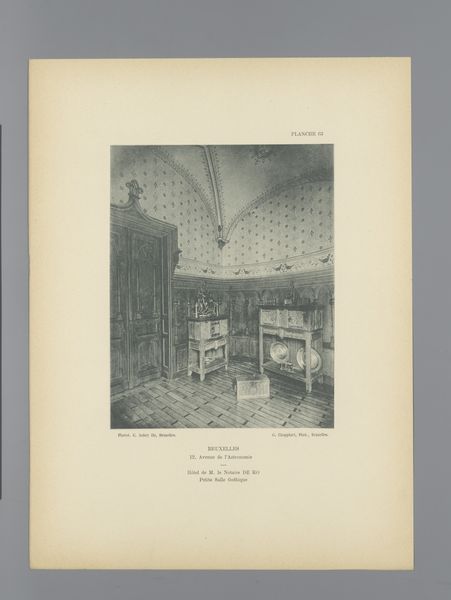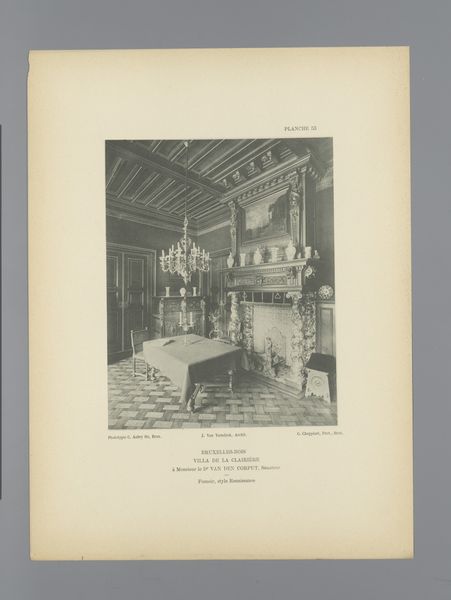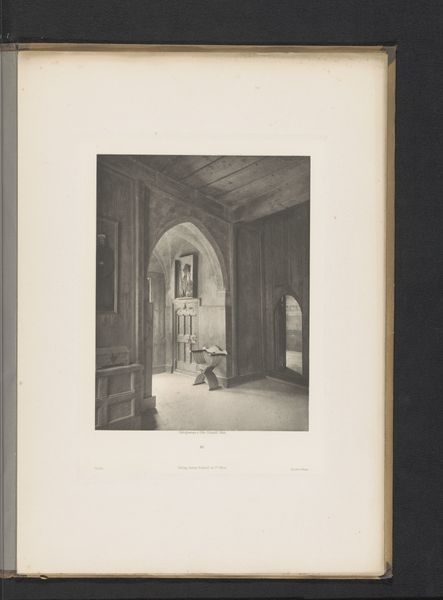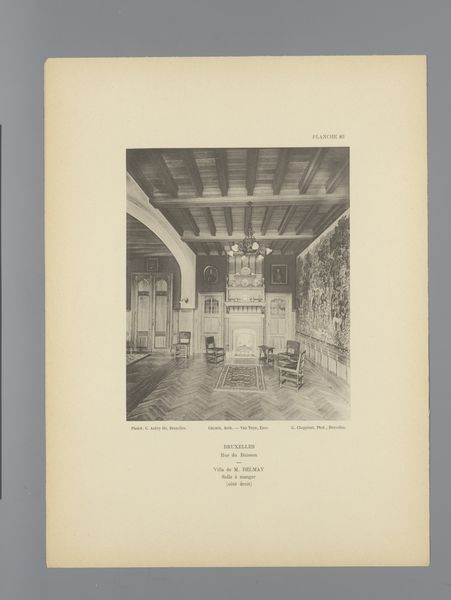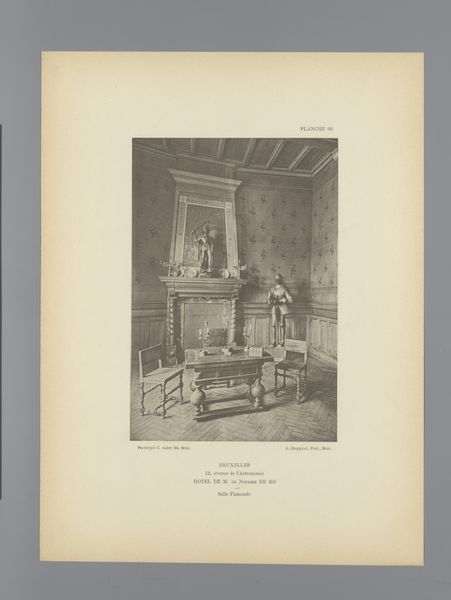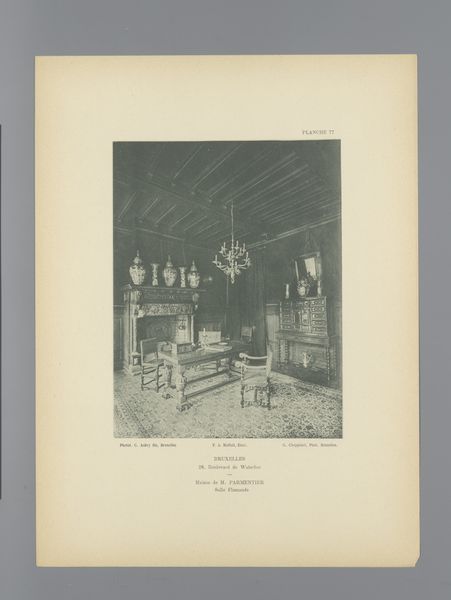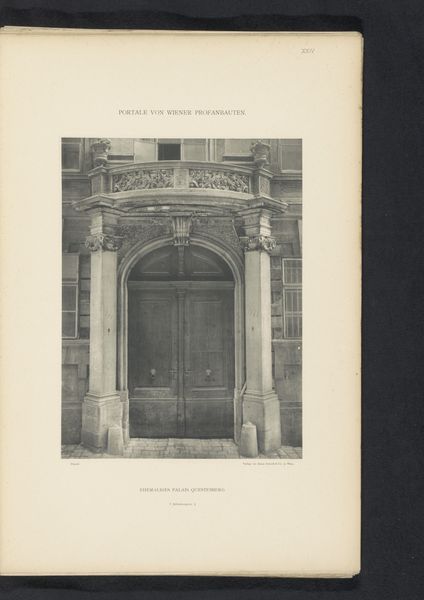
print, photography, architecture
# print
#
landscape
#
photography
#
architecture
#
realism
Dimensions: height 199 mm, width 154 mm
Copyright: Rijks Museum: Open Domain
Curator: This work, an earlier example of architectural photography before 1898, is entitled "View of a Staircase in Gaasbeek Castle, Belgium" attributed to G. Choppinet. It's presented as a black and white print, capturing a rather gothic looking interior. What’s your initial read? Editor: My first impression is one of stillness and muted grandeur. The grayscale rendering adds to this solemn, almost melancholic feel. I'm drawn to the repetitive vertical lines, they’re oddly calming, creating a sense of measured ascension. Curator: Indeed. The print itself highlights certain socio-political aspects linked with castles at the end of the 19th century. Castles, after having lost their defensive importance, underwent heavy renovations to present the nobility as relevant again in public perception and photography was used as a popular mass media. This specific angle emphasizes the staircase. It subtly suggests the architecture and inhabitants had to go upwards to climb in society, thus recreating the noble lifestyle. Editor: That's interesting, particularly considering the symmetrical composition, reinforcing the idea of ascending to power, as you mention. Note how the lines and stonework funnel the eye upwards, while the statue of what looks like a knight remains fixed at the bottom, almost guarding the base of social mobility. I'd say, regarding purely formal analysis, the composition cleverly reinforces your point regarding hierarchical ascendance. Curator: Precisely. Now, regarding materials, let’s look at how print itself—as a reproducible medium— democratized access to these exclusive spaces and architectural marvels like this castle. This photo made formerly inaccessible spaces available for scrutiny by any member of the public, indirectly suggesting an element of transparency to the feudal system. Editor: It seems a kind of propaganda in print, showcasing stability and power as pillars of society by literally exhibiting stone pillars that compose the castle itself. The absence of vibrant colors renders the social message even more monolithic. Even so, in some instances, the photograph shows wear, signifying age. This subtly contradicts its goal of appearing like the first building stones have just been laid. Curator: Yes, the aesthetic choice does play a role and can also signify that while old, its importance to the fabric of the nation still holds, but time and society waits for no castle. It appears these points clash as this artwork presents an interesting oxymoron. It serves both political parties in various ways: It can subtly promote a political structure and at the same time, the passage of time denotes change which in return supports more liberal standpoints. Editor: I've become very attentive to how Choppinet's formal construction of the image conveys symbolic importance that would potentially appeal to every political stance and ideology, as we’ve observed. A fascinating play on public memory and visibility.
Comments
No comments
Be the first to comment and join the conversation on the ultimate creative platform.
